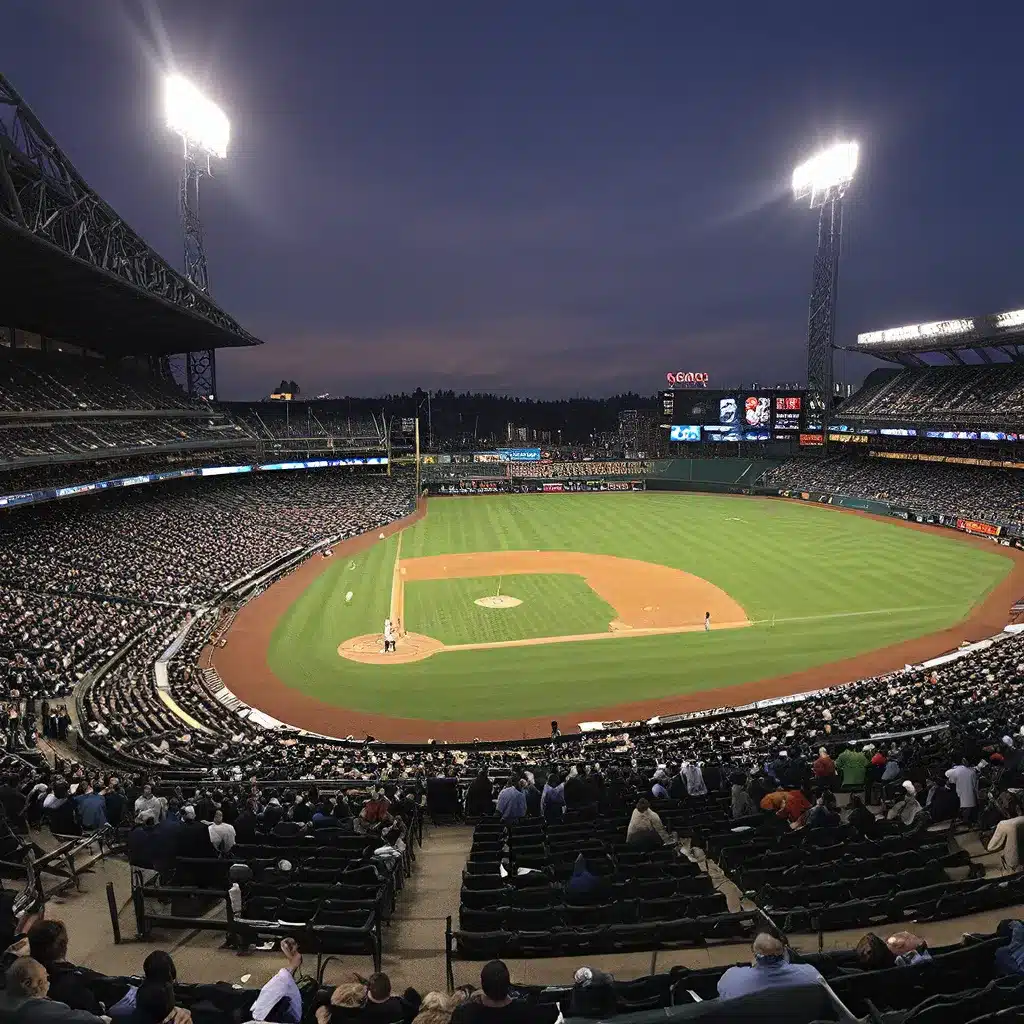
The Evolution of a Beloved Baseball Stadium
Safeco Field, the home of the Seattle Mariners, has long been a beloved landmark in the heart of the Pacific Northwest. This iconic stadium, nestled in the vibrant city of Seattle, has undergone a remarkable transformation in recent years, cementing its status as a true gem of baseball architecture.
Built in 1999 to replace the aging Kingdome, Safeco Field was designed to capture the essence of the region, incorporating elements of the surrounding natural beauty into its very fabric. The stadium’s retractable roof, a feat of engineering, allows for year-round play, shielding fans from the notoriously unpredictable Seattle weather while maintaining an open-air feel.
In 2023, Safeco Field underwent a comprehensive renovation, elevating its status as one of the premier sports venues in the country. The newly renovated Diamond Club, a spacious and upscale space within the stadium, exemplifies the attention to detail and commitment to excellence that characterizes this iconic structure.
The Diamond Club is a testament to the timeless elegance of Safeco Field. This stunning space features a modern open-floor concept, providing a seamless and sophisticated setting for a variety of events, from holiday parties to formal dinners. With a total square footage of 6400 and a reception capacity of 350, the Diamond Club offers an unparalleled experience for those seeking to host a truly memorable occasion.
Architectural Marvels and Breathtaking Views
The architectural design of Safeco Field is a true marvel, blending form and function with a keen eye for detail. The stadium’s walls of glass capture the breathtaking beauty of the Pacific Northwest, offering panoramic views of downtown Seattle, the iconic Alki peninsula, and the majestic Elliott Bay.
From almost every corner of the stadium, visitors are treated to a visual feast, with the opportunity to spot bald eagles soaring overhead, witness breathtaking rainbows, and enjoy the spectacular fireworks that often light up the night sky during game days.
The attention to architectural detail is truly remarkable, with the stadium’s walls of glass capturing the timeless visions of the beauty of living in the Pacific Northwest. The superior craftsmanship and meticulous design ensure that every visitor is immersed in the unique ambiance of the region, creating an unforgettable experience.
A Hub for the Community
Safeco Field is not just a baseball stadium; it is a hub for the vibrant and thriving community of Seattle. The stadium’s location in the heart of the city, nestled within the trendy West Seattle neighborhood, adds to its allure and integration with the local culture.
Beyond the boundaries of the playing field, Safeco Field has become a gathering place for Seattleites, serving as a backdrop for a variety of events and activities. From holiday parties to formal dinners, the stadium’s versatile spaces, such as the Diamond Club, cater to the diverse needs of the community.
The stadium’s proximity to other popular destinations, such as CenturyLink Stadium, home of the Seattle Seahawks, further enhances its allure, allowing visitors to experience the thrill of game day almost as if they were there in person.
A Timeless Masterpiece
Safeco Field is more than just a baseball stadium; it is a testament to the enduring spirit of Seattle and the Pacific Northwest. Through its recent renovations and ongoing commitment to excellence, the stadium has cemented its status as a timeless masterpiece, a place where the beauty of the region is seamlessly woven into the fabric of the fan experience.
As the Mariners continue to take the field and the crowds cheer on their beloved team, Safeco Field will undoubtedly remain a source of pride and joy for the people of Seattle, a true icon of the city’s rich sports and cultural heritage. For those lucky enough to experience the stadium, the memories and the sense of connection to the community will undoubtedly last a lifetime.
Explore the unique sports venues that have captured the hearts of fans around the world and discover the stories behind the stadiums that have become more than just places to watch a game.

